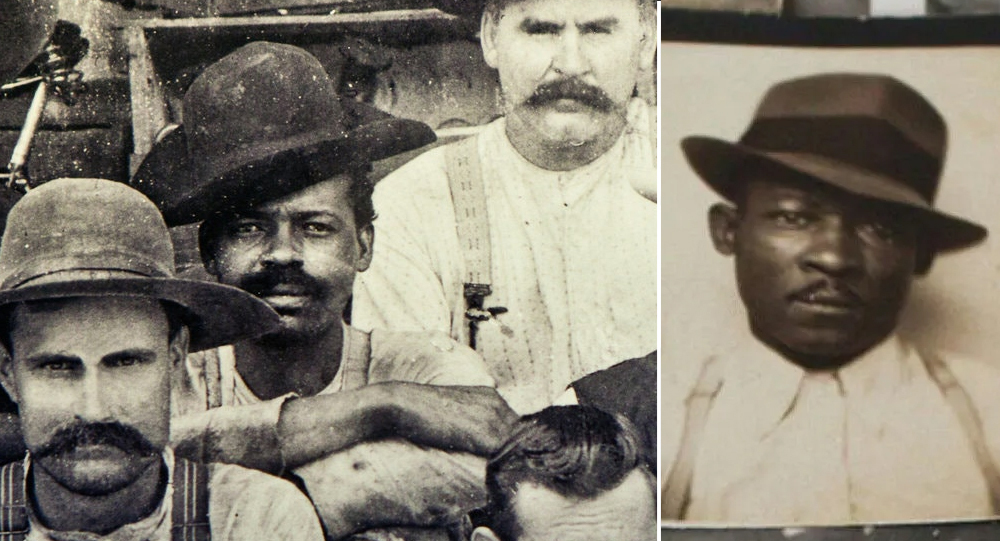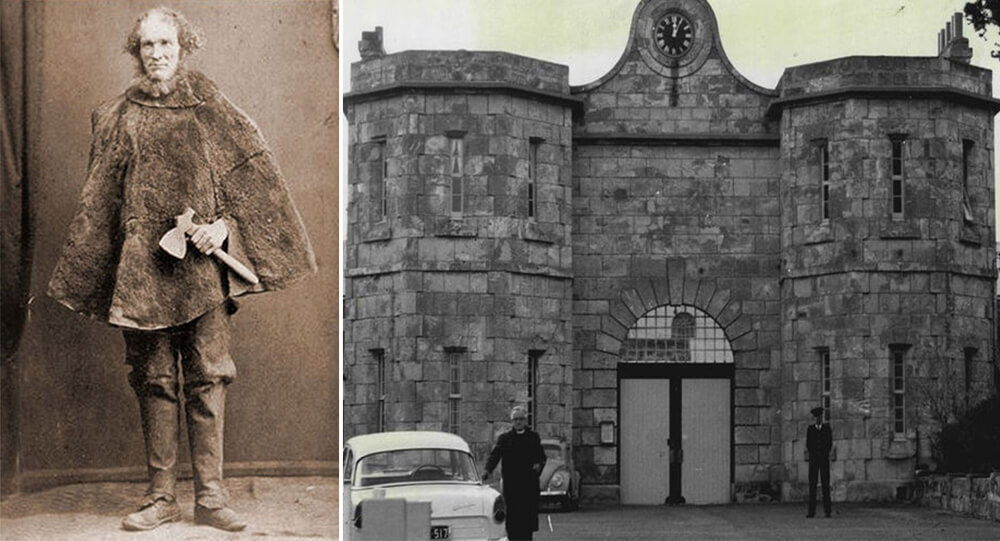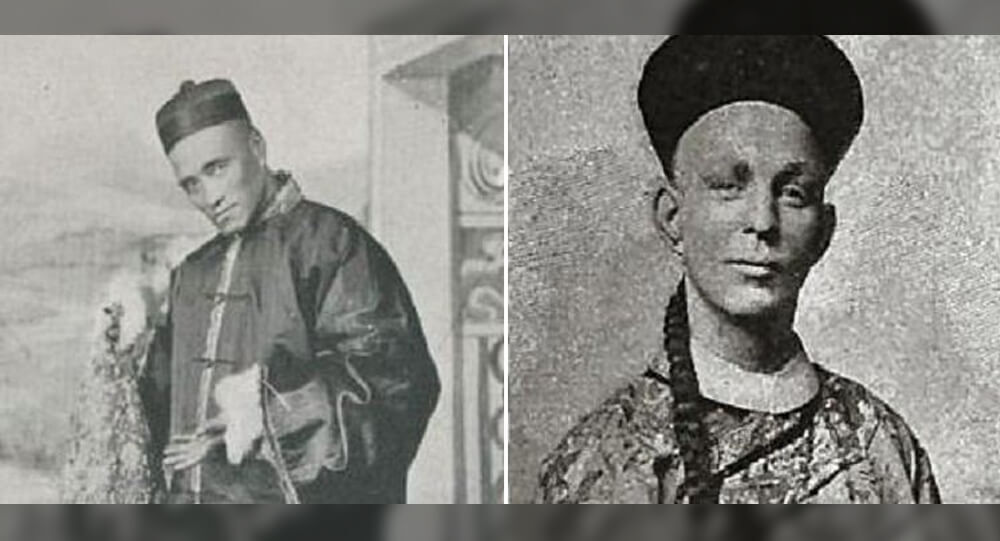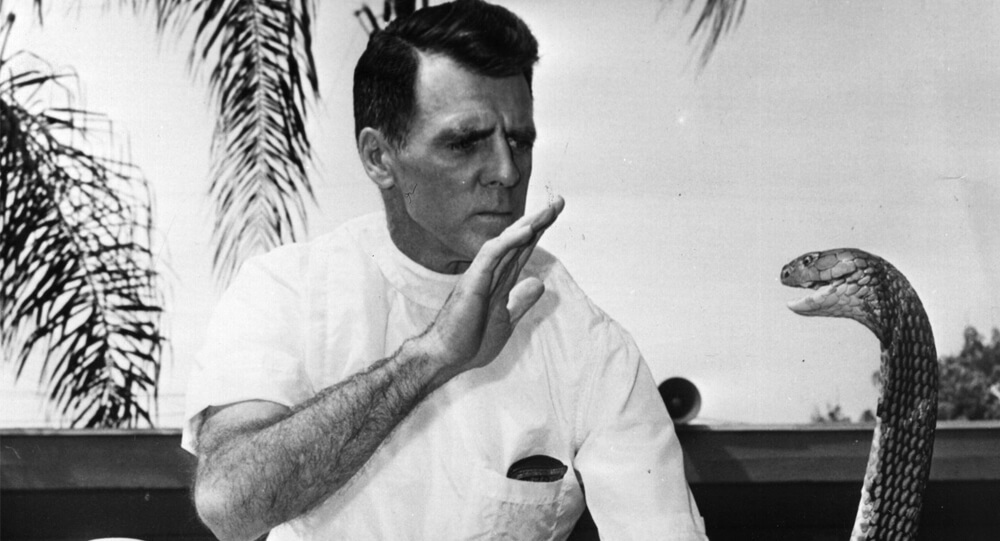

Terry Fox, a 21-year-old one-legged cancer patient who ran 143 days before dying
An 18-year-old was traumatized in a car accident in 1976. He was rear-ended by a truck, completely totaling his own vehicle. Surprisingly, the young man was unharmed after the collision.
Only his knee hurt, which he attributed to the collision. But the discomfort persisted. He played basketball frequently in school and believed that the pain was brought on by too much stress.
But the pain persisted after the basketball season was over, so he made the decision to see a doctor. He was identified as having osteogenic sarcoma, a bone cancer that frequently begins in the knee and spreads rapidly, four months after his accident. The doctors knew right away that amputating his leg and then starting chemotherapy would give him the best chance of survival.
Five days after his diagnosis, on March 9, 1977, medical professionals amputated his right leg 15 cm above the knee.
Running 143 Consecutive Marathons
Terry Fox was a young man, and like any other 18-year-old, he was completely shocked to learn that he had cancer.

It is challenging to comprehend what a diagnosis like this means when your entire life is in front of you. No matter how emotionally intelligent you are, you will never be able to feel what Terry Fox felt during those moments.
But he didn’t stay on his situation. He didn’t turn bitter. In fact, Terry Fox was already playing golf with his father on an artificial leg just a few weeks after his leg was amputated. But the cancer did not go away. He underwent chemotherapy for almost one and a half years following the operation.
He witnessed the suffering of other cancer patients during that time, which had an impact on Fox. He made the decision to run across Canada to raise awareness for cancer after being inspired by Dick Traum, an amputee who had completed the New York City Marathon.
The “Marathon of Hope” was founded in this manner. On April 12, 1980, on Canada’s east coast, Terry Fox started his nearly impossible feat after more than a year of training.
He ran a marathon every day for 143 days. Recall that Terry Fox was a cancer patient who could only use one leg. He ran despite the pain, wind, rain, and storm.
He did something that no one had ever done, despite the fact that he never finished his marathon. Cancer spread to his lungs after 5,372 km (3,338 miles), forcing him to stop on September 1st, 1980. Terry passed away ten months later, 30 days before turning 23.
Confronting Pain
What motivated this man? Terry Fox stayed strong despite experiencing the biggest setback of his life—terminal illness. In fact, he increased his suffering. He aggravated his pain instead of treating it.

When I consider my own life, I search for relief from pain at the first sign of it. We frequently look for something to relieve our suffering, whether it be mental or physical. We look for a way out.
Terry instead searched for it. He stated:
“I got satisfaction out of doing things that were difficult. It was an incredible feeling. The pain was there, but the pain didn’t matter.”
That is a completely different mentality. Most people associate difficulty with being difficult. When things get challenging, they give up. But what if you adopted a different outlook?
You seek out adversity rather than fleeing it. I’ve been working on teaching my brain to enjoy challenges more. And let me tell you: it’s not simple.
When you face challenges head-on, you truly understand why humanity avoids them. Comfort is simple. There is no effort needed. Anyone with average intelligence can comprehend that. But we don’t consider that when we’re in the middle of a difficult task. We search for the simplest solution.
It’s challenging to establish a career, launch a business, work on a relationship, maintain good health, learn a new language, relocate, travel the world, and develop new skills.
But you shouldn’t let that stop you. There is only one thing you can do if you want to live a life without regrets: Go all in.

Albert Einstein’s brain after it was stolen from his body
Albert Einstein's brain was taken by the opportunistic pathologist who performed his autopsy hours after he died and kept in two jars for 30 years. The stolen brain of Albert Einstein was preserved in a cookie jar for 30 years until being discovered by a journalist.

Susanna Salter: The Trailblazing Story of America’s First Female Mayor
In 1887, Susanna Salter became the first female mayor in the United States, elected in Argonia, Kansas. Her nomination was initially a prank by men opposing women in politics. However, she won by a landslide and served effectively, inspiring the women’s suffrage movement and breaking barriers for women in leadership.

The true story Of The Radium Girls that change US labor laws
Hundreds of young women worked in clock factories during World War I, painting watch dials with luminous radium paint. The company lied about the risk of radiation, claiming there was no danger, which resulted in the death of the young women.

Irena Sendler: woman who rescued Jews during holocaust
Irene Sendler was the Zegota resistance group's head of the children's department. She risked her life to smuggle children out of the Warsaw ghetto, place them with Polish families or orphanages, give each child a new identity, and keep records so that they could be returned to their families. In 1943, the Gestapo arrested and sentenced her to death, but she was rescued by Zegota.

June and Jennifer Gibbons The silent twin who Only Spoke to Each Other
Identical twins June and Jennifer Gibbons were born on 11 April 1963 at a military hospital in Aden, Yemen where their father worked as part of the Royal Air Force.

Nearest Green, America's first known Black master distiller
Nathan "Nearest" Green was an African-American head stiller who is now more frequently referred to as a master distiller. He was renowned for imparting his distilling knowledge to Jack Daniel, the creator of Jack Daniel's Tennessee whiskey distiller, after Jack Daniel was freed from slavery following the American Civil War.

Graves holding hands over wall, A Catholic woman and her Protestant husband grave
A protestant man and a Catholic woman who weren't allowed from being buried together in a graveyard in 19th-century Holland turned their graves into a monument showing them holding hands across the wall separating them.

Top 10 most cruel medical procedures that are being used today
We are all aware that medicine has advanced dramatically over the last fifty years. There are several modern medical approaches available today, but this was not always the case. However, the past of medicine is a dark one. Medical leeches, lobotomy, vascular surgery, cranial stenosis, and even electroshock therapy are all options. These are only a couple of the cruel healing techniques that are still in use today.

Archaeologists Uncover 2,000-Year-Old Amazonian Cities Using Lidar Technology
Deep in the Ecuadorian Amazon, archaeologists have uncovered an ancient network of urban settlements once inhabited by the Upano people about 2,000 years ago. Using cutting-edge lidar technology, these discoveries reveal a highly organized society featuring sophisticated agricultural systems, drainage canals, and extensive road networks. This transformative find challenges long-held assumptions about ancient Amazonian societies and sheds light on a complex civilization thriving in one of the world’s most biodiverse regions.

Remembering the 1945 Empire State Building Disaster: When a Plane Met Skyscraper
An airplane crashed into the Empire State Building in 1945. Among other damage, plane parts severed the cables of an elevator and the woman inside fell over 70 stories. She lived and holds the world record for the longest survived elevator fall.

10 world’s most destructive and dangerous volcanic eruptions in history
Volcanic eruptions can devastate cities, change the world's atmosphere, and devastate economic systems. They can create molten lava rivers, mudslides, suffocating ash, and poisonous gases that cause chaos around the world for years. A volcanic explosion's effects can be massive, from its size to its death toll to its economic cost. Here is ten world’s most destructive and dangerous volcanic eruptions in history.

Mario Segale, Developer Who Inspired Nintendo to Name Super Mario
Super Mario is named after real-life businessman Mario Segale, who was renting out a warehouse to Nintendo. After Nintendo fell far behind on rent, Segale did not evict them but gave them a second chance to come up with the money. Nintendo succeeded and named their main character after him.

The Arabia Steamboat: Unearthing a 19th Century Time Capsule from the Missouri River
The Arabia was a steamboat that sank in the Missouri River in 1856. Over time, the river shifted 800 meters to the east, eventually turning the site of the sinking into a field. The steamboat remained under 45 feet of slit and topsoil until 1988, when it was excavated. The mud, as it turned out, was such a great preserver that most of the artifacts on board were found to be intact. They even found jars of preserved apples that were still edible!

Moondyne Joe: The story of Australia's most notorious prison escapee
A man named Joseph Bolitho Johns (A.K.A Moondyne Joe) broke out of Australian prisons so many times that the police were compelled to build a special cell just for him. He escaped from that as well.

The 1976 April Fools' Pranks, Planetary Alignment
On April fool's Day, 1976, the BBC convinced many listeners that a special alignment of the planets would temporarily decrease gravity on Earth. Phone lines were flooded with callers who claimed they felt the effects.

The Bizarre (And Magical) Duel Between Chung Ling Soo And Ching Ling Foo
Ching Ling Foo and Chung Ling Soo were two magicians from the early 20th century who were bitter rivals. While Ching Ling Foo was genuinely Chinese, Chung Ling Soo was actually a New Yorker named William Robinson.

Hedy Lamarr, A Hollywood actress who also a mathematician and inventor
Hollywood actress Hedy Lamarr was also a mathematician and the inventor of frequency hopping spread spectrum, a technology still used for bluetooth and wifi

The Baltic Way: the longest unbroken human chain in history
On August 23, 1989, about 2 million people from Latvia, Estonia, and Lithuania formed a human chain that united all 3 countries to show the world their desire to escape the Soviet Union and the communism that brought only suffering and poverty. This power stretched 600 km.

The true story of Josephine Myrtle Corbin, the lady born with four legs and two private parts
Josephine Myrtle Corbin, an American sideshow performer born in 1868, had a rare condition known as dipygus, which caused her to have four legs, each smaller inner leg paired with one of her outer legs. Corbin joined the sideshow circuit, captivating audiences as the "Four-Legged Girl from Texas."

A Brief History of the PlayStation Gaming Console
Sony's PlayStation was never meant to be an actual product. Instead, it was intended to be a CD-ROM console that would support Nintendo games. However, when Nintendo backed out of the deal at the last minute, Sony went ahead and launched what soon became one of the most successful gaming consoles of all time.

The 1814 London beer flood
In 1814, there was a beer flood in London when a tank containing more than 300,000 gallons ruptured in which 8 people drowned.

The story of Bill Haast, who lived to be 100 despite his extensive snake venom injections
Bill Haast immunized himself by injecting snake venom into his blood for several years. He holds the Guinness World Record for surviving the most lethal snake bites, having been bitten over 172 times. Bill became known as "Snake Man" around the world and lived for over 100 years.

Why the Brooklyn Bridge Was Once Crossed by 17 Camels and 21 Elephants
On May 30, 1883, a rumor that the Brooklyn Bridge was going to collapse caused a stampede, which killed at least at twleve people. To prove the bridge was safe, P.T. Barnum led a parade of 21 elephants over it.

Marion Stokes recorded 30 years of television
Marion Stokes, a Philadelphia woman began taping whatever was on television in 1979 and didn’t stop until her death in 2012. The 71,000 VHS and Betamax tapes she made are the most complete collection preserving this era of TV. They are being digitized by the Internet Archive.

Story of Kathrine Switzer: the first woman to run in Boston Marathon
Before women were allowed to run in the Boston Marathon, Kathrine Switzer participated. A race official attempted to forcefully remove her from the race in 1967, but her boyfriend pushed him down. She was the first female finisher who had a numbered entry in the race.


























